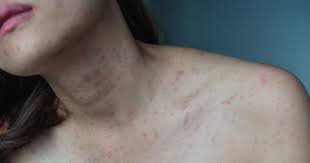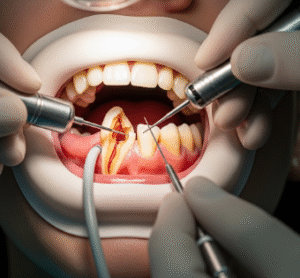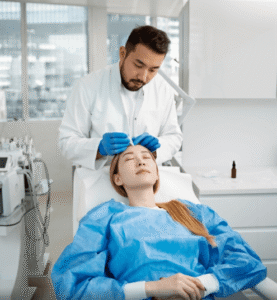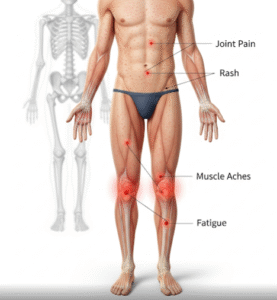Overview
Mastocytosis is a rare condition characterized by an abnormal accumulation of mast cells in the skin, bone marrow, or internal organs. In Korea, the condition is diagnosed and treated in specialized hospitals with advanced hematology and dermatology departments. Since it can range from mild skin involvement to life-threatening systemic disease, early recognition and individualized care are crucial.
What is Mastocytosis?
Mastocytosis is a disorder of mast cells, immune system cells involved in allergic and inflammatory responses. In mastocytosis, mast cells multiply excessively and accumulate in tissues, releasing chemicals like histamine, which cause various symptoms ranging from skin rashes to severe allergic reactions.
There are two main types:
- Cutaneous Mastocytosis (CM): Affects the skin, often in children.
- Systemic Mastocytosis (SM): Involves bone marrow, liver, spleen, or gastrointestinal tract, more common in adults.
Symptoms
- Itchy, reddish-brown skin spots (urticaria pigmentosa)
- Flushing and redness of the skin
- Abdominal pain, nausea, diarrhea
- Low blood pressure and dizziness (anaphylaxis in severe cases)
- Bone pain and muscle pain
- Fatigue and weakness
- Enlargement of liver, spleen, or lymph nodes (in systemic cases)
Causes
- Genetic mutations, particularly KIT gene mutations
- Overproduction of mast cells in bone marrow
- Triggered by allergens, stress, infections, or medications
Risk Factors
- Family history of mast cell disorders
- Certain genetic predispositions
- More common in children (cutaneous type) and middle-aged adults (systemic type)
Complications
- Severe allergic reactions (anaphylaxis)
- Osteoporosis or bone fractures due to mast cell activity
- Gastrointestinal bleeding and ulcers
- Organ dysfunction in systemic mastocytosis
- Rarely progresses to mast cell leukemia
Prevention
While mastocytosis cannot be completely prevented, flare-ups can be minimized by:
- Avoiding known triggers (insect stings, alcohol, certain drugs like aspirin, extreme heat)
- Using protective skincare
- Carrying an epinephrine auto-injector (for anaphylaxis risk)
- Regular check-ups in specialized clinics
Treatment Options in Korea
Diagnosis
- Skin biopsy to detect mast cell accumulation
- Blood and urine tests for histamine or tryptase levels
- Bone marrow biopsy for systemic disease
- Genetic testing for KIT mutations
- Imaging (CT, MRI, ultrasound) if organ involvement is suspected
Medical Treatments
- Antihistamines (H1 and H2 blockers) for itching, flushing, and GI symptoms
- Corticosteroids to reduce inflammation
- Epinephrine injections for anaphylaxis
- Cytoreductive therapy (cladribine, interferon-alpha) in advanced systemic cases
- Tyrosine kinase inhibitors (e.g., midostaurin, avapritinib) for KIT mutation–positive patients
Surgical or Advanced Therapies
- Bone marrow transplant (rare, only for severe cases)
- Endoscopic management of GI bleeding
- Supportive orthopedic care for bone-related complications
Rehabilitation and Support
- Nutritional counseling for GI-related symptoms
- Psychological support for chronic illness management
- Patient education about avoiding triggers
- Long-term follow-up with hematology and dermatology specialists













